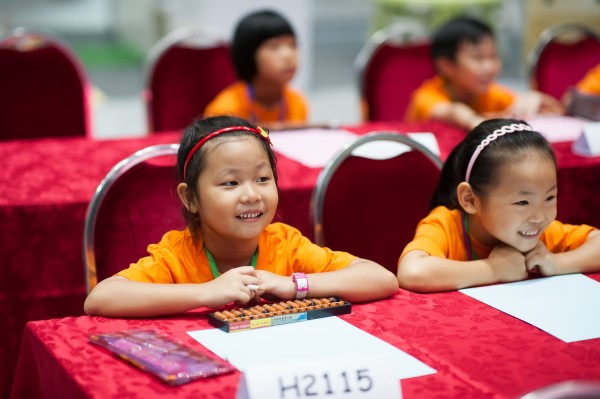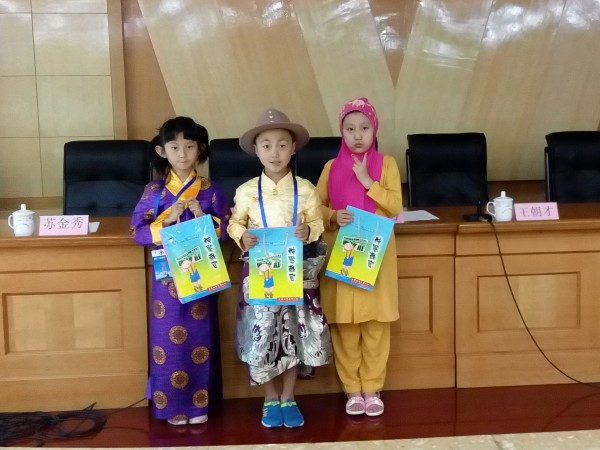A history dating back to long time ago — Chinese education prospers in Malaysia
2015-07-15 丨
The writer is from the Ministry of culture development

Malaysia is a multi-ethnic, multi-cultural country. A quarter of the country’s population is ethnic Chinese. The ethnic Chinese predecessors have emphasized Chinese education in Malaysia since 200 years ago. That’s why the Chinese education has prospered there.
To date, Malaysia has established a Chinese education system from primary, secondary to tertiary institutions, with a total of 1,290 primary schools, 60 independent secondary schools and several tertiary institutions run by the Chinese community. There are about 70 million students. The Chinese education in Malaysia has such a scale and influence that is unrivalled in the world. Looking back from its birth, survival and development of the Chinese education, we can see the unremitting self-improvement spirit of the Chinese nation and the broad and profound Chinese culture.
The Chinese education in Malaysia has emphasized from the very beginning the inheritance of traditional Chinese cultural heritage throughout the process of teaching and perfecting the educational system. In the early 19th century, a large number of Chinese immigrated to Malaysia. In order to make sure their children receive good education, they established private schools in guilds, temples, or a shanty house. They taught in dialect the classics such as “Four Books”, “filial piety”, “Three Character Classic”, “Family Names”, “Thousand Character Classic”; they also taught ancient calligraphy, abacus, etc. In 1898, under the influence of the Chinese government which adopted the reformer’s proposition of educational reform, Malaysia began establishing new schools. The first modern Chinese school, Penang Chinese School, was born in 1904. Traditional Chinese courses were taught, including self-cultivation, reading classics, Chinese, and history.
While it adhered to the essence of the national cultural heritage, Chinese education in Malaysia has undergone a long and arduous process of development due to historical reasons and external environments. It can be called an epic of Chinese education history. In the early days, Chinese education was firmly opposed in face of repression and physical obstacles. During the Great Depression from 1929 to 1934, Chinese schools faced serious funding difficulties. Even as faculty could not even be paid, people in charge played opera for fundraising or donations, or cut salaries, rather than applying for grants. Despite all the obstacles, Chinese education became more prosperous and resilient due to the concerted efforts of the Chinese community. Malaysia’s brave Chinese community and the subsequent strong Chinese educational leadership has jointly written the arduous history of Chinese education in Malaysia and the spirit of resolutely defending national rights and culture.
Chinese education in Malaysia has experienced different times before becoming one of the pillars of Malaysia’s education. An important reason is its emphasis on education quality and the educational philosophy of student’s all-round development. Take the trilingual guideline for example. Students are required to learn Chinese as descendants of the Chinese nation; to learn Malay so as to integrate into the Malaysian society; to learn English for going global. Attributable to this teaching philosophy, Chinese school students have shown remarkable talents. Many Malaysians and Indians have sent their children to Chinese schools.
Malaysian Chinese education has adhered to its mission of passing on the essence of the 5,000 years of traditional Chinese culture. This has also become the responsibility and mission of the Chinese community. More importantly, the everlasting ethnic sentiments and national spirit, which is at the core of the Chinese traditional culture, has become the spiritual strength and quality of Malaysian Chinese and a valuable personal and social asset.
To date, Malaysia has established a Chinese education system from primary, secondary to tertiary institutions, with a total of 1,290 primary schools, 60 independent secondary schools and several tertiary institutions run by the Chinese community. There are about 70 million students. The Chinese education in Malaysia has such a scale and influence that is unrivalled in the world. Looking back from its birth, survival and development of the Chinese education, we can see the unremitting self-improvement spirit of the Chinese nation and the broad and profound Chinese culture.
The Chinese education in Malaysia has emphasized from the very beginning the inheritance of traditional Chinese cultural heritage throughout the process of teaching and perfecting the educational system. In the early 19th century, a large number of Chinese immigrated to Malaysia. In order to make sure their children receive good education, they established private schools in guilds, temples, or a shanty house. They taught in dialect the classics such as “Four Books”, “filial piety”, “Three Character Classic”, “Family Names”, “Thousand Character Classic”; they also taught ancient calligraphy, abacus, etc. In 1898, under the influence of the Chinese government which adopted the reformer’s proposition of educational reform, Malaysia began establishing new schools. The first modern Chinese school, Penang Chinese School, was born in 1904. Traditional Chinese courses were taught, including self-cultivation, reading classics, Chinese, and history.
While it adhered to the essence of the national cultural heritage, Chinese education in Malaysia has undergone a long and arduous process of development due to historical reasons and external environments. It can be called an epic of Chinese education history. In the early days, Chinese education was firmly opposed in face of repression and physical obstacles. During the Great Depression from 1929 to 1934, Chinese schools faced serious funding difficulties. Even as faculty could not even be paid, people in charge played opera for fundraising or donations, or cut salaries, rather than applying for grants. Despite all the obstacles, Chinese education became more prosperous and resilient due to the concerted efforts of the Chinese community. Malaysia’s brave Chinese community and the subsequent strong Chinese educational leadership has jointly written the arduous history of Chinese education in Malaysia and the spirit of resolutely defending national rights and culture.
Chinese education in Malaysia has experienced different times before becoming one of the pillars of Malaysia’s education. An important reason is its emphasis on education quality and the educational philosophy of student’s all-round development. Take the trilingual guideline for example. Students are required to learn Chinese as descendants of the Chinese nation; to learn Malay so as to integrate into the Malaysian society; to learn English for going global. Attributable to this teaching philosophy, Chinese school students have shown remarkable talents. Many Malaysians and Indians have sent their children to Chinese schools.
Malaysian Chinese education has adhered to its mission of passing on the essence of the 5,000 years of traditional Chinese culture. This has also become the responsibility and mission of the Chinese community. More importantly, the everlasting ethnic sentiments and national spirit, which is at the core of the Chinese traditional culture, has become the spiritual strength and quality of Malaysian Chinese and a valuable personal and social asset.
LATEST

- First Online Shenmo Training for Ru On Mar 29, 2021

- Online Shenmo Entrepreneurship Exchange Meeting On Mar 29, 2021

- First Shenmo Online Abacus Mental M On Feb 03, 2021
EVENTS
Combination of Traditional Culture and Mo On Jun 02, 2020
Shenmo News:Shenmo Nigeria Abacus Mental On Oct 23, 2019
Shenmo News:The delegation of the 1st On Oct 21, 2019







